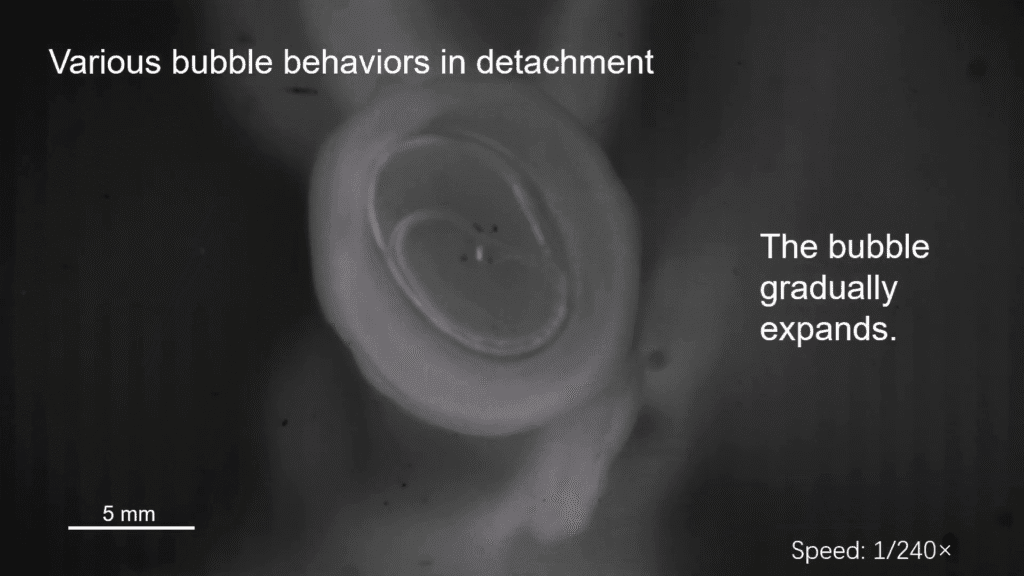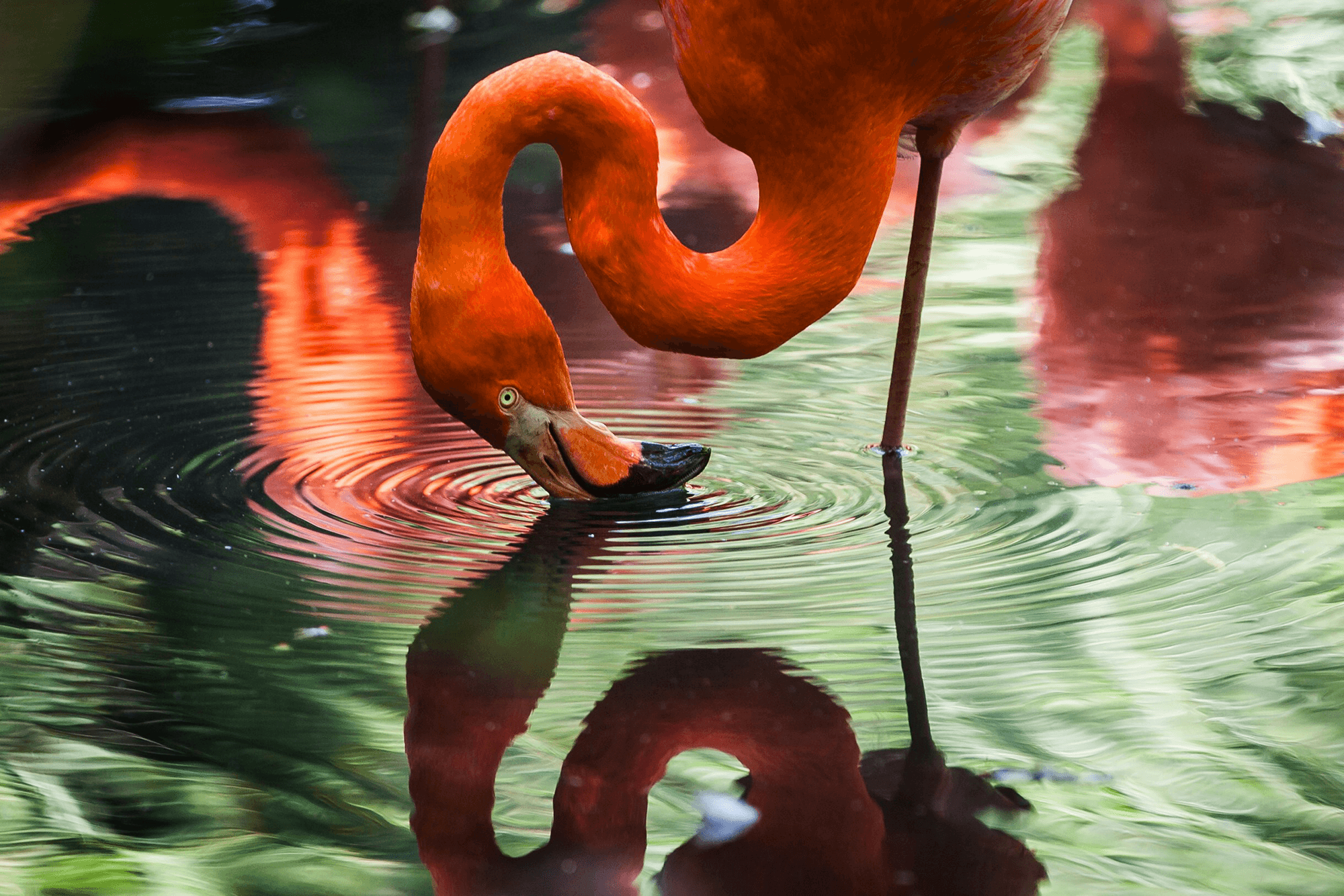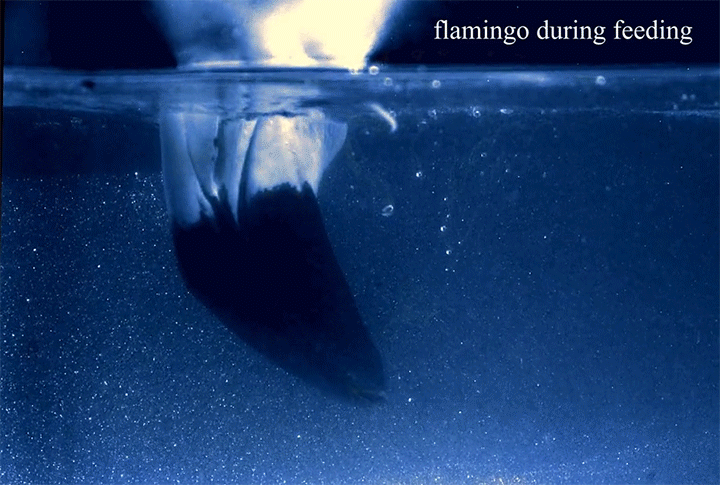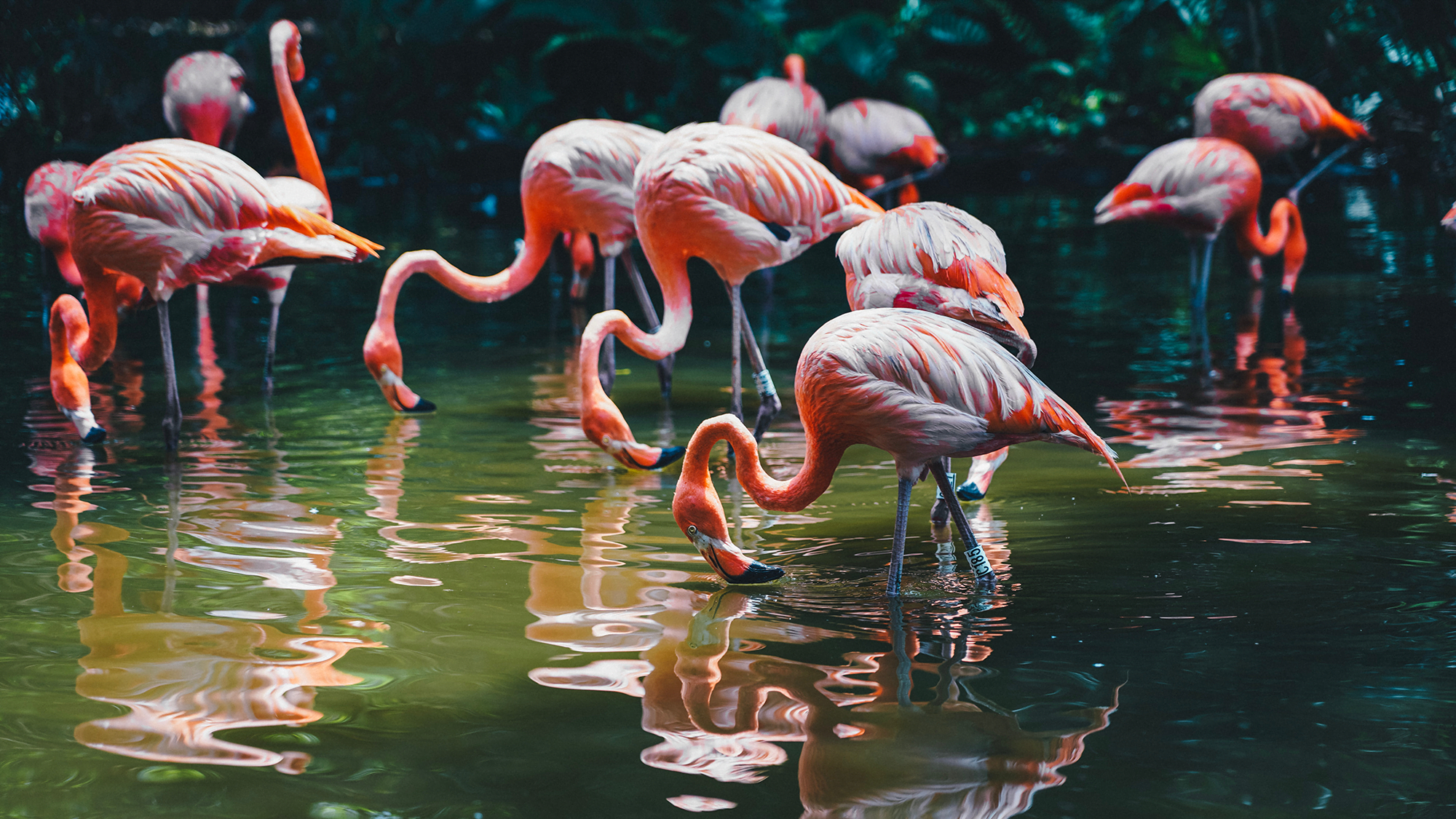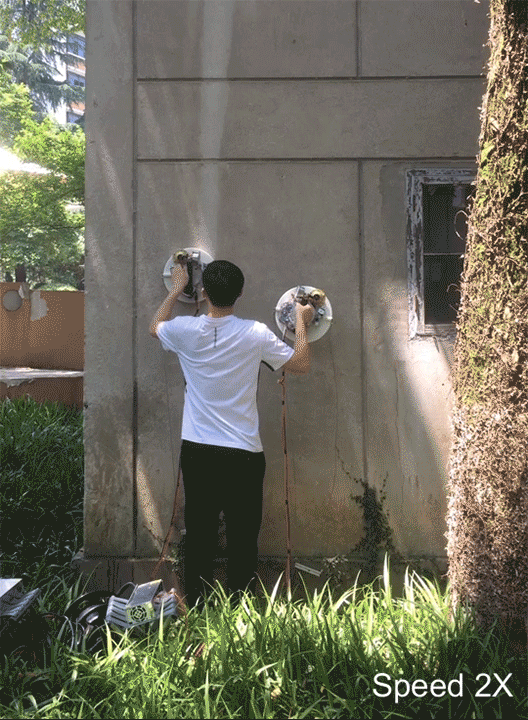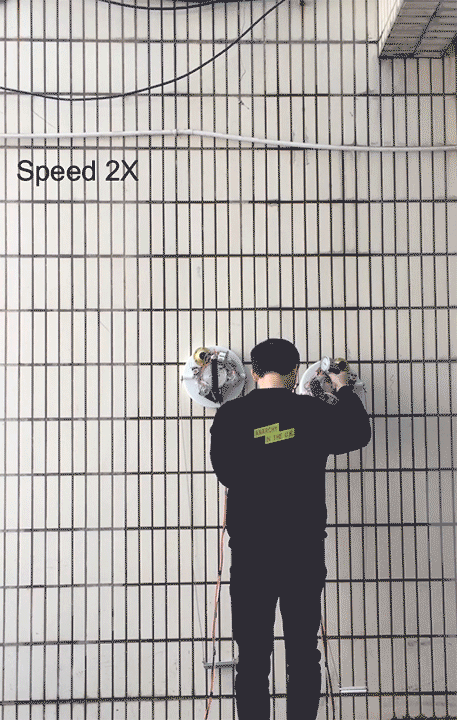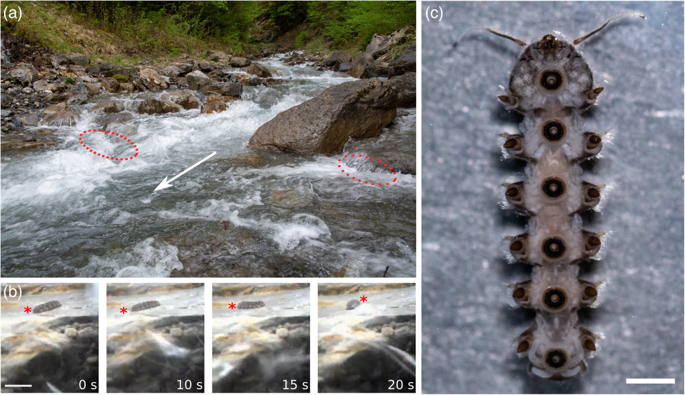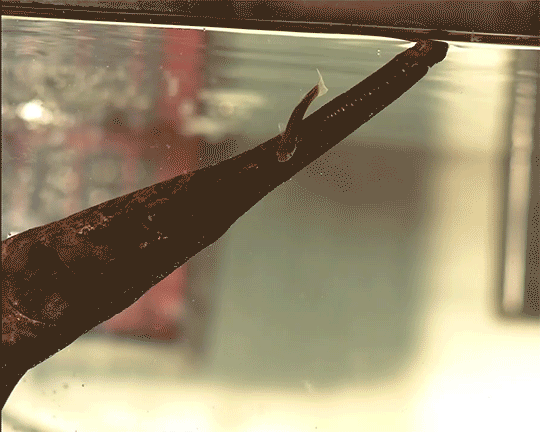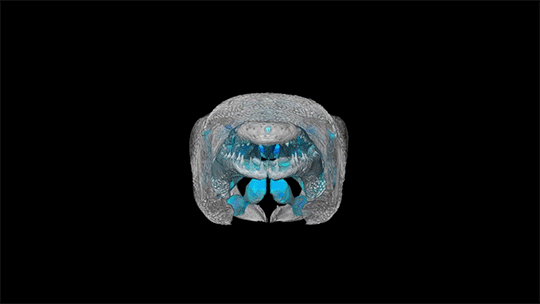Cuttlefish, like many cephalopods, catch prey with their tentacles. Suction cups along the tentacle help them hold on. In this video, researchers share preliminary studies of what goes on inside these suction cups as they’re detached. The low pressures inside the suction cup cause water to vaporize, temporarily. As seen for both the cuttlefish and a bio-inspired suction cup, small bubbles form inside the attached cup, coalesce into larger bubbles, and then get destroyed in the catastrophic leak that occurs once part of the suction cup detaches. (Video and image credit: B. Zhang et al.)
Tag: suction

Flamingo Fluid Dynamics, Part 1: A Head in the Game
Flamingos are unequivocally odd-looking birds with their long skinny legs, sinuous necks, and bent L-shaped beaks. They are filter-feeders, but a new study shows that they are far from passive wanderers looking for easy prey in shallow waters. Instead, flamingos are active hunters, using fluid dynamics to draw out and trap the quick-moving invertebrates they feed on. In today’s post, I’ll focus on how flamingos use their heads and beaks; next time, we’ll take a look at what they do with their feet.

Feeding flamingos often bob their heads out of the water. This, it turns out, is not indecision, but a strategy. Lifting its flat upper forebeak from near the bottom of a pool creates suction. That suction creates a tornado-like vortex that helps draw food particles and prey from the muddy sediment.

When feeding, flamingos will also open and close their mandibles about 12 times a second in a behavior known as chattering. This movement, as seen in the video above, creates a flow that draws particles — and even active swimmers! — toward its beak at about seven centimeters a second.

Staying near the surface won’t keep prey safe from flamingos, either. In slow-flowing water, the birds will set the upper surface of their forebeak on the water, tip pointed downstream. This seems counterintuitive, until you see flow visualization around the bird’s head, as above. Von Karman vortices stream off the flamingo’s head, which creates a slow-moving recirculation zone right by the tip of the bird’s beak. Brine shrimp eggs get caught in these zones, delivering themselves right to the flamingo’s mouth.
Clearly, the flamingo is a pretty sophisticated hunter! It’s actively drawing out and trapping prey with clever fluid dynamics. Tomorrow we’ll take a look at some of its other tricks. (Image credit: top – G. Cessati, others – V. Ortega-Jimenez et al.; research credit: V. Ortega-Jimenez et al.; submitted by Soh KY)

Flamingo Fluid Dynamics
Flamingos strut and dance and bob, but there’s more to these comical birds than meets the eye. Flamingos can thrive in nutrient-poor environments that other birds eschew, like salt flats and alkaline lakes. Their secret, it turns out, is a mastery of fluid dynamics.
Researchers studying the behaviors of the Nashville Zoo’s flamingo flock discovered that their seemingly silly behaviors all had fluid dynamical consequences. When the birds stomped and danced in small circles, it stirred up the muck in the water they eat from. With their beaks below the surface, the birds then opened and closed their mouths, darting their tongues in and out; this generated suction to carry food particles toward them. Periodically, they’d bob their heads up, creating a vortex for extra suction. Even their walking, which they did while skimming the water surface with their bills facing backward, generated flows that helped carry food to their mouths. (Image credit: cshong; research credit: V. Ortega-Jiménez et al.; via Science; submitted by Kam-Yung Soh)

The Froghopper’s Incredible Suction
The tiny froghopper feeds on the sap in xylem, a feat that requires overcoming more than a megapascal of negative pressure. Plants, as you may recall, transport water and nutrients from their roots to their leaves through negative pressure, essentially pulling on the water as if it were a rope. So drinking that sap is not as simple as making a hole and waiting for sap to flow. Instead, froghoppers must generate even more suction than the plant. Some scientists have been so skeptical that such a feat is even possible that they’ve disputed whether plants are truly at such high negative pressures.
But a new study shows that froghoppers can, indeed, generate immense suction – up to nearly 1.5 megapascals. (By comparison, humans generate less than a tenth of that suction, even on a stubborn milkshake.) The researchers used two complementary methods to prove the insects’ ability. First, they studied the anatomy of the pumplike structure in the froghoppers’ heads, where the suction is generated, and determined the insects’ sucking potential from a simple calculation of force divided by area. Then, they observed feeding froghoppers in a chamber where they could measure their metabolic rates through carbon dioxide output. As the froghoppers fed, their metabolic rates spiked to 50 – 85% higher than when at rest. Only when the xylem tensions exceeded the theoretical biomechanical limits for froghopper suction did the tiny insects seem to stop feeding. (Image and research credit: E. Bergman et al.; via Science News; submitted by Kam-Yung Soh)

The Challenges of Being Small
For juvenile fish, feeding is a challenge. Their small size — often less than 5 mm in length — makes hydrodynamically capturing prey much harder because of viscosity’s relatively larger effect on them. But size may not be the only factor in determining their success, as a new study shows.
Researchers studied feeding behaviors of two, equally-sized species’ larvae: zebrafish and guppies. The biggest difference between these two species is their developmental time prior to beginning to hunt on their own. Guppies develop five times longer than zebrafish larvae before they start feeding.
Both fish have the same hydrodynamic limitations to overcome. If you look closely at the first image, you’ll see fluid being pushed ahead of the fish as it swims. The researchers refer to this as a bow wave, and it effectively announces to any prey that the fish is approaching. To sneak up on prey, the fish has to be able to generate enough suction force to pull its food in from beyond the bow wave’s reach. The experiments showed that guppies were able to do this reliably, while zebrafish could not. The subsequent difference in their feeding success was stark: the guppies’ success rate was almost five times that of the zebrafish! (Image and research credit: T. Dial and G. Lauder, source; via G. Lauder)

Watery Suction Enables Spiderman-Like Climbing
Spiderman makes it look easy, but sticking to surfaces with enough force to climb them is a challenge at the human scale. These researchers tackled the problem with a new method of suction. Traditional suction devices are limited by their ability to seal at the edges. Any surface roughness that prevents a perfect seal creates a leak and fighting those leaks to maintain vacuum pressure requires larger and more powerful pumps.
In this work, the researchers essentially eschew a solid sealing mechanism for a liquid one. A fan inside each suction cup creates a spinning ring of water along the seal’s boundary that allows it to conform even to very rough surfaces without losing vacuum pressure. The researchers demonstrate the principle in action with a hexapod wall-climbing robot as well as with human-scale climbing systems.
But don’t plan your web-slinging adventures just yet! As you can see on the concrete wall example, the system leaks a lot of water, especially when disengaging the suction. Right now, you can only climb as far as your water supply allows. (Image and research credit: K. Shi and X. Li; via Spectrum; submitted by Kam-Yung Soh)

Holding Fast in the Flow
Many tiny creatures in the natural world face living in fast flows. The larvae of the net-winged midge, for example, forage their way through fast-flowing Alpine springs with speeds of 3 m/s or more. You or I would find standing in such water a challenge, but these larvae are unbothered, thanks to the clever suction-cup-like appendages that help anchor them to rough rocks.
The larvae generate their strong attachment with an outer rim flexible enough to conform to uneven surfaces. When they activate the central piston of the suction cup, this creates a seal strong enough to withstand forces up to 600 times the larvae’s body weight. But holding on to one spot forever is hardly useful, so the larvae also have a V-shaped notch in the cup controlled by dedicated muscles. When activated, this quickly breaks the seal, allowing the larvae to relocate. (Image and research credit: V. Kang et al.; via The Engineer; submitted by Marc A.)

Plant Week: Bladderworts
Carnivorous plants live in nutrient-poor environments, where clever techniques are necessary to keep their prey from getting away. The aquatic bladderwort family nabs their prey through ultra-fast suction. This starts with a slow phase (top) in which water is pumped out of the trap. Because the internal pressure is lower than the external hydrostatic pressure, this compresses the walls of the trap, and it leaves the trap’s door narrowly balanced on the edge of stability. A slight perturbation to the trigger hairs around the door will cause it to buckle.
That’s when things get fast. As the door buckles and the trap expands to its original volume, water gets sucked in, pulling whatever prey was nearby with it. The door reseals as the pressure inside and outside the trap equalizes, and, in only a couple milliseconds total, the bladderwort has its snack. It secretes digestive enzymes to break down what it’s caught, and over many hours, it pumps out the trap to reset it. (Image and research credit: O. Vincent et al.; submitted by David B.)
All this week, FYFD is celebrating Plant Week. Check out our previous post on how dandelion seeds fly tens of kilometers.

Catching Prey
The skinny, freshwater alligator gar can grow to more than 2 meters in length, giving it a distinct resemblance to its namesake. But this fish’s history traces back more than a hundred million years to the Early Cretaceous. And a new (pre-printed) study, combining live observations and numerical models built from CT-scans, is shedding new light on how the gar and its prehistoric ancestors feed.
The gar uses a lateral strike (top) to come at its prey from the side. But hydrodynamically speaking, that’s a tough way to catch dinner. As soon as the gar’s snout accelerates toward its prey, it pushes a bow wave ahead of it, like an early warning signal. To counter that disadvantage, the gar has a complex bone structure in its skull (bottom) that helps it generate suction. Note how the gar’s jaw and throat open sequentially from front to back. Each expansion sucks in water, and by timing them just right, the gar produces suction throughout its entire attack. The bow wave warning does its prey no good if both are already getting sucked into the gar’s mouth! (Image and research credit: J. Lemberg et al., bioRxiv pre-print; via Science; submitted by Kam-Yung Soh)

An Octopus’ Handshake
Cephalopods, especially octopuses, are fascinating creatures. At sea level, an octopus can generate an impressive pressure differential of 1 to 2 atmospheres with each of its suckers. That incredible grip is possible thanks to fluid dynamics. An octopus’s sucker consists of two main parts: the ring-shaped infundibulum on the outer surface and the inner, cup-shaped acetabulum. When the infundibulum makes contact with a surface, it creates a water-tight seal. The octopus then contracts radial muscles along the acetabulum. This expands the inner chamber. The water trapped in the acetabulum now has to take up a greater volume, causing the pressure to drop and creating suction. To let go, the octopus simply relaxes the radial muscles or contracts circular ones to reduce the chamber volume and release the suction. (Video credit: Deep Look)


